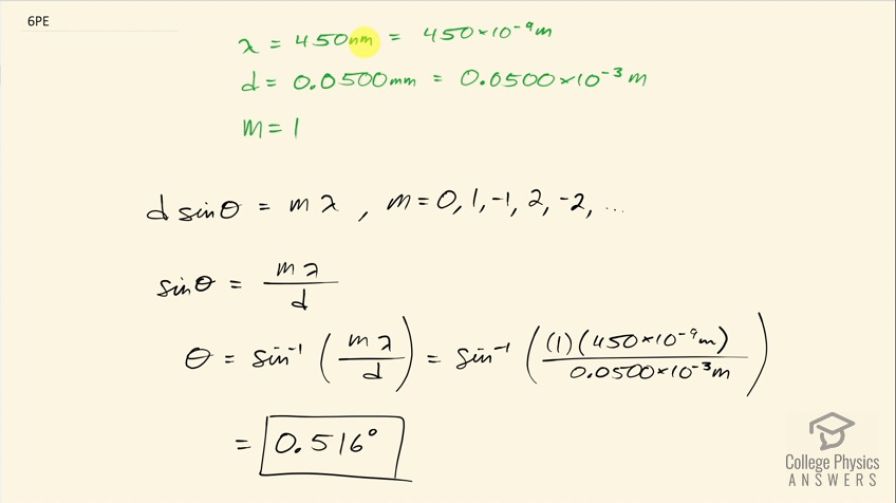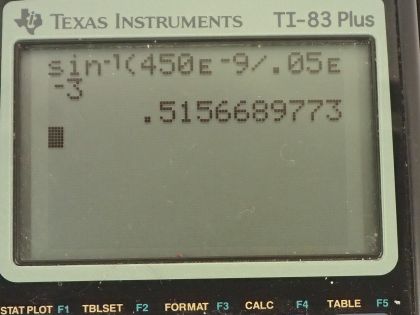Question
At what angle is the first-order maximum for 450-nm wavelength blue light falling on double slits separated by 0.0500 mm?
Final Answer
Solution video
OpenStax College Physics, Chapter 27, Problem 6 (Problems & Exercises)

vote with a rating of
votes with an average rating of
.
Calculator Screenshots
Video Transcript
This is College Physics Answers with Shaun Dychko. During the double-slit experiment we have light incident with a wavelength of 450 nanometers on two slits that are separated by 0.0500 millimeters; we need to convert these into units that are the same because when we divide them later, we need those units to cancel and so we'll change them both into meters so we have 450 times 10 to the minus 9 meters and we have 0.0500 times 10 to the minus 3 meters. We are looking for the angle to the first order maximum so that means m equals 1 in this formula for the maxima or the places of the constructive interference between the light emanating from each of the two slits. d is the distance between the slits, sin of the angle Θ is the angle with respect to this sort of central axis here so we have the light hitting both these slits here and then this is the angle Θ to the various maxima or minima as the case may be. So in this case, we have maxima and this is our formula where m is 0, 1, negative 1, 2, negative 2 and this is the order of the maximum so it says the first order maximum, which means m is 1. We are going to solve for sin Θ first by dividing both sides by d so we have sin Θ equals mλ over d then take the inverse sin of both sides and so the Θ is inverse sin of the order times the wavelength divided by the separation between the slits. So that's inverse sin of 1 times 450 times 10 to the minus 9 meters divided by 0.0500 times 10 to the minus 3 meters and that is 0.516 degrees.
